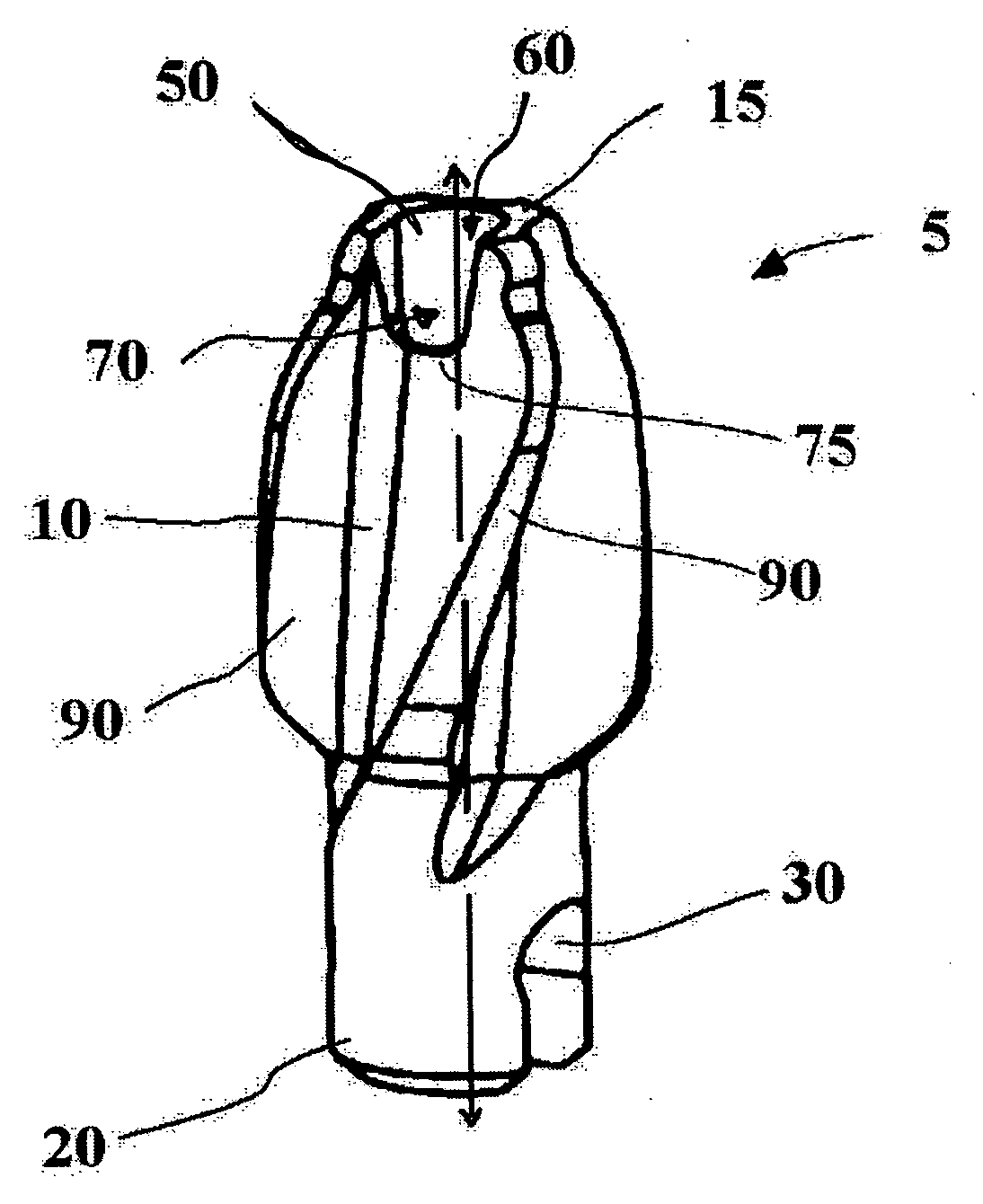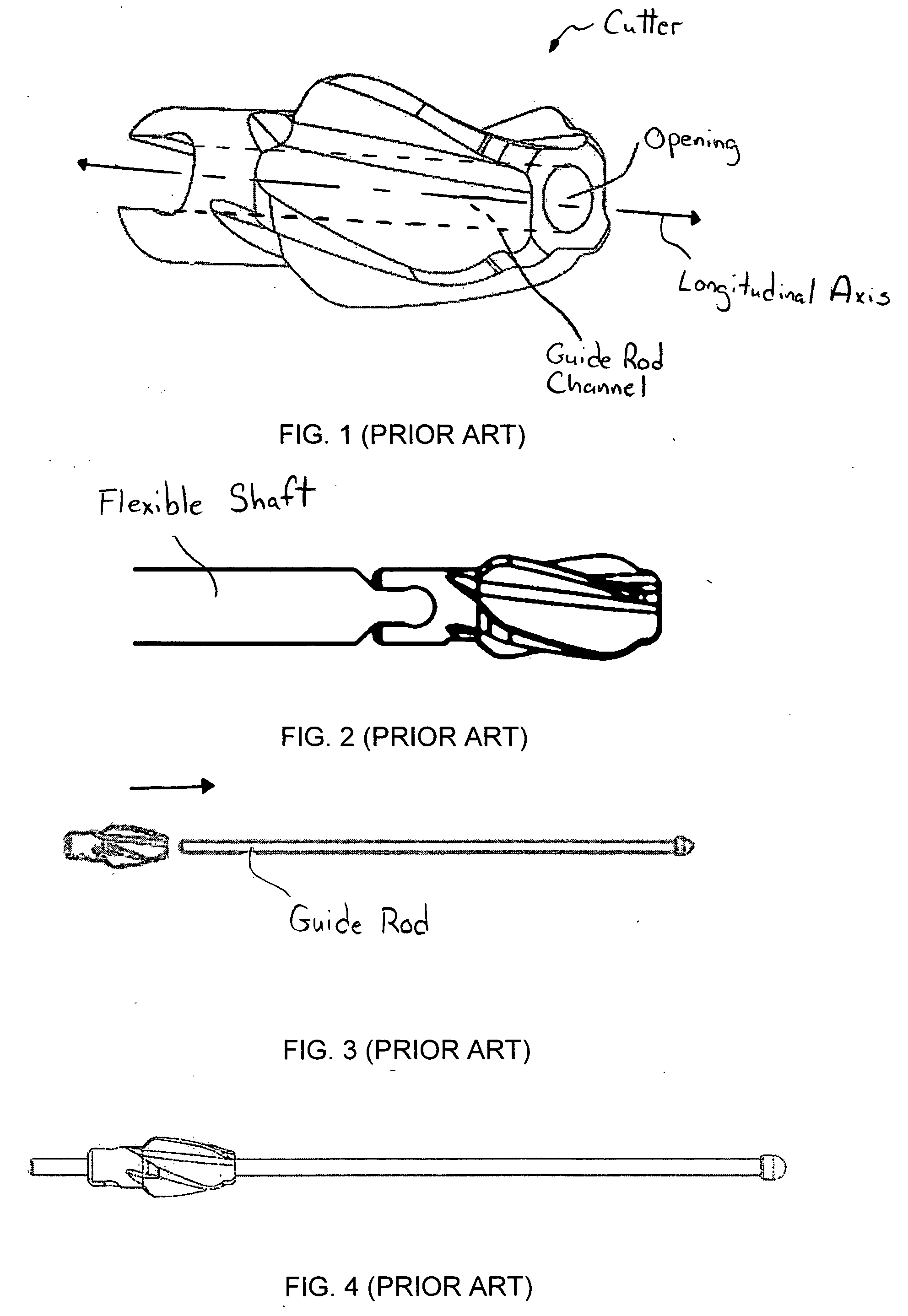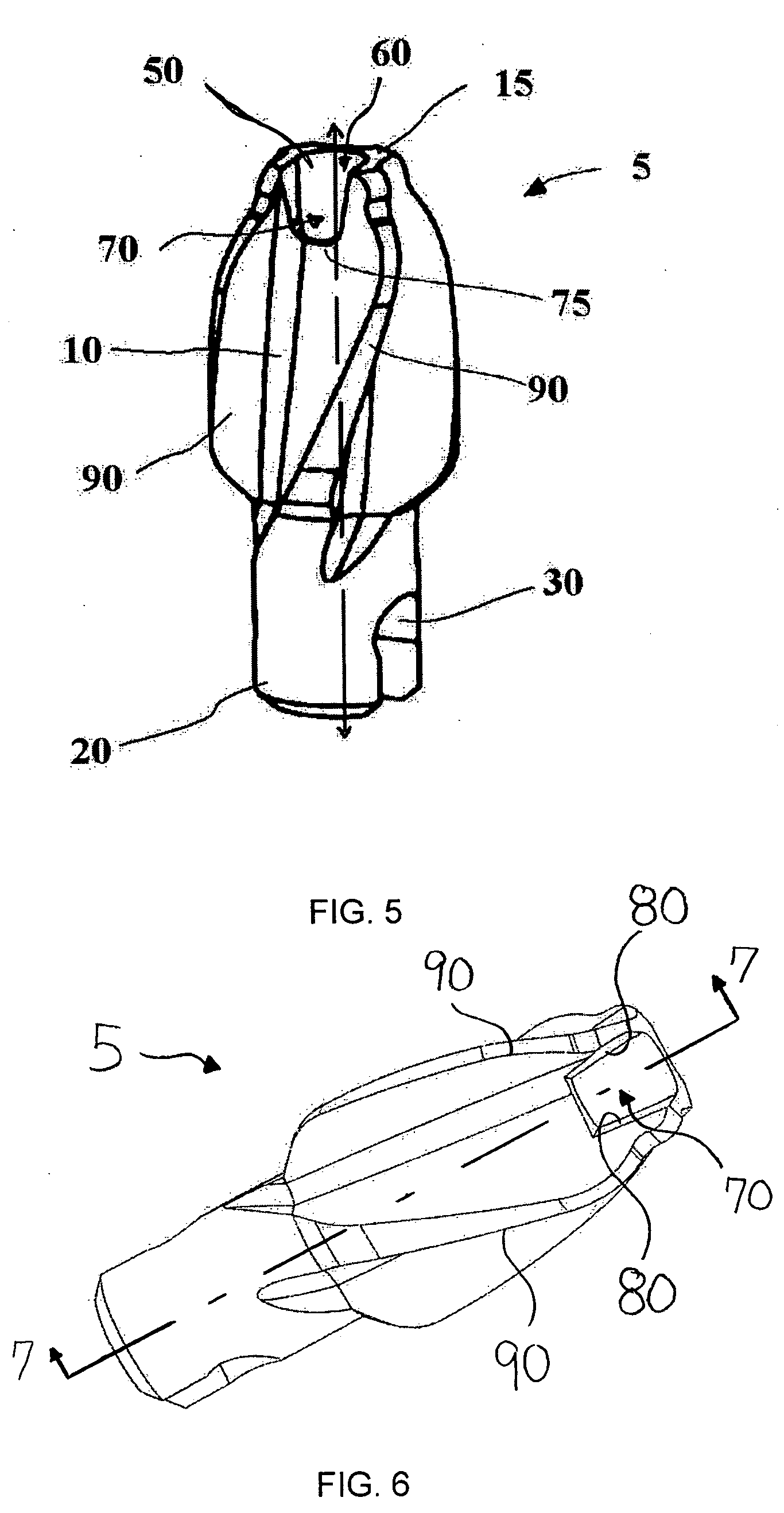Cutting device
a cutting device and reaming technology, applied in the field of cutting or reaming devices, can solve the problems of slow and tedious surgery, difficult cutting of bones, and only slightly more rigid guide rods, so as to facilitate the more rapid connection of cutters and facilitate the more rapid exchanging of cutters
- Summary
- Abstract
- Description
- Claims
- Application Information
AI Technical Summary
Benefits of technology
Problems solved by technology
Method used
Image
Examples
Embodiment Construction
[0054] Referring to the drawings, and in particular FIGS. 1 through 4, a prior art cutter is shown, as well as the prior art method of connecting or loading the cutter with a guide rod. A guide rod bore or channel of the prior art cutter is along the longitudinal axis of the cutter and defines an opening that is perpendicular to the longitudinal axis.
[0055] In order to connect the prior art cutter with the guide rod, the surgeon must align the guide rod along the longitudinal axis of the cutter and insert it through the opening. The cutter then travels along the guide rod, which is disposed through the guide rod channel of the cutter. During the surgical procedure, this is a difficult task at best, especially due to the tight tolerance between the central bore in the reamer and the outer surface of the guide rod.
[0056] Referring to FIGS. 5 through 10, a cutter of the present invention is shown and generally represented by reference numeral 5. Cutter 5 has a body 10 with a distal e...
PUM
 Login to View More
Login to View More Abstract
Description
Claims
Application Information
 Login to View More
Login to View More - R&D
- Intellectual Property
- Life Sciences
- Materials
- Tech Scout
- Unparalleled Data Quality
- Higher Quality Content
- 60% Fewer Hallucinations
Browse by: Latest US Patents, China's latest patents, Technical Efficacy Thesaurus, Application Domain, Technology Topic, Popular Technical Reports.
© 2025 PatSnap. All rights reserved.Legal|Privacy policy|Modern Slavery Act Transparency Statement|Sitemap|About US| Contact US: help@patsnap.com



